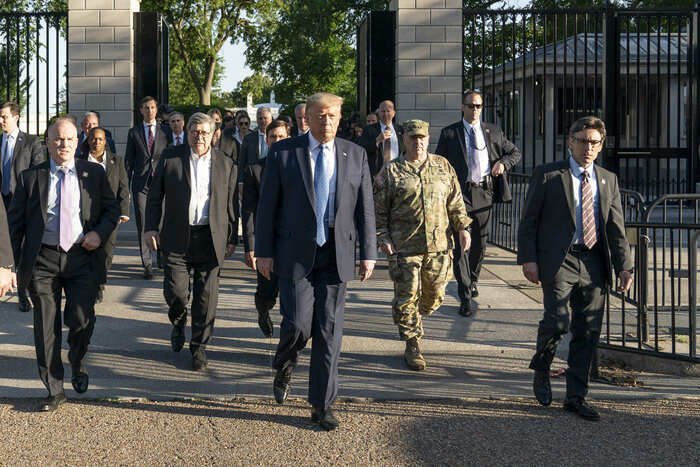As the critical July 9 tariff deadline nears, US President Donald Trump has reignited global attention by stating that a US-India trade deal could be finalized at any moment. Speaking aboard Air Force One, Trump signaled optimism that India is now “ready to lower barriers” for American companies, a development that could mark a major shift in bilateral trade relations between two of the world’s largest democracies.
This declaration adds weight to an already tense situation. India is currently facing a steep hike in reciprocal tariffs—from 10% up to 27%—on major US exports, should a deal fail to materialize before July 9. The paused tariff hikes, initially delayed under a temporary 90-day truce agreed in April 2025, are set to be automatically reinstated. But with both US and Indian officials showing a rare alignment in tone, the stage seems set for a breakthrough.
Why the US-India Trade Deal Matters Now More Than Ever
The US-India trade deal is not just about tariffs—it reflects the strategic economic and geopolitical alignment between Washington and New Delhi. Both countries have long struggled to find common ground on trade, with each side viewing the other as a valuable partner but also a stubborn negotiator.
Under Trump’s “America First” agenda, the United States has pushed for better market access and fairer trading terms. On the other side, India is eager to avoid trade sanctions and maintain smooth access to its largest export destination. The friction came to a head in April 2025 when Trump threatened a 26% tariff on Indian goods. After significant diplomatic efforts, both countries agreed to a cooling-off period that now ends on July 9.
The urgency surrounding this deal is amplified by upcoming political events in both nations. While Trump eyes re-election with a tough-on-trade platform, India is managing state-level elections and cannot afford economic disruptions. The pressure to strike a deal that protects domestic interests while fostering international goodwill is intense on both ends.
Trump’s Latest Statement: “India is Going to Do That”
In a media interaction on July 1, President Trump said:
“Right now, India doesn’t accept anybody in. I think India is going to do that. If they do that, we’re going to have a deal for less, much less tariffs.”
This comment highlights Washington’s long-standing grievance about India’s non-tariff barriers. US exporters—especially those in agriculture, manufacturing, and tech—have often struggled with regulatory red tape, licensing restrictions, and limited digital commerce access.
The optimism was further reinforced by Treasury Secretary Scott Bessent, who confirmed that negotiations were in their final stages, saying both nations are “very close” to concluding a meaningful US-India trade deal.

Key Negotiation Points in the Trade Deal
1. Tariff Reductions on US Goods
One of the primary US demands is a sharp reduction in Indian tariffs on key American exports. These include:
- Agricultural products (almonds, apples, rice)
- Industrial metals and raw materials
- Automobile and defense components
Reducing these tariffs would provide a lifeline to American exporters looking to compete in the booming Indian market.
2. Access to India’s Domestic Market
The US administration is also demanding that India open up sectors where foreign participation has been minimal. Key challenges cited include:
- Onerous business licensing processes
- Cumbersome investment norms
- Limited permissions for e-commerce and digital platforms
This push is aimed at creating space for US giants like Amazon, Walmart, Apple, and Tesla to scale operations in India.
3. India’s Strategic Red Lines
India, however, is treading cautiously. Sensitive sectors like agriculture and dairy are deeply linked to voter sentiment and employment. New Delhi is resisting:
- Opening its dairy industry to foreign competition
- Diluting data localization mandates
- Liberalizing foreign investment rules in small retail sectors
Speaking in New York, Indian Foreign Minister S. Jaishankar said:
“We are in the middle—hopefully more than the middle—of a very intricate trade negotiation.”
What’s at Stake If No Deal Is Reached?
The consequences of a failure to finalize the US-India trade deal before July 9 are stark:
- India will face automatic hikes in tariffs up to 27% on exports such as textiles, jewelry, and machinery.
- The US could reimpose duties on Indian steel and aluminum products.
- Both countries could respond with retaliatory tariffs, sparking a trade war.
- Investor confidence could fall, especially in sectors like tech, pharmaceuticals, and energy.
- Small businesses, particularly in India’s informal sector, would suffer due to global supply chain disruptions.
Moreover, Trump has confirmed that no extension will be given beyond July 9. This hard deadline is designed to pressure both sides into making difficult but necessary trade-offs.
India vs. Japan: Why Trump Sees Hope in New Delhi
Interestingly, Trump’s recent statements revealed contrasting views on Japan and India. While expressing frustration with Japan—particularly its refusal to buy US rice—he showed greater faith in India’s flexibility.
He said:
“Japan is not budging. India seems like it might actually do the right thing.”
This comparative leniency has fueled speculation that the US-India trade deal might serve as a blueprint for future negotiations with other Asian nations. The logic is simple: India has far more to gain from US access and is willing to make incremental compromises to achieve that.
India’s Goals and Challenges in the Trade Talks
India’s primary goals from the deal include:
- Ensuring continued access to the US market, which accounts for nearly 18% of its total exports
- Protecting labor-intensive sectors such as garments, gems, and agricultural products
- Avoiding a negative trade shock ahead of upcoming state and general elections
- Retaining control over key policymaking areas like data governance and food security
Domestic resistance is also strong. Stakeholders like dairy cooperatives, local MSMEs, and farmers’ unions are wary of opening up too fast. As a result, any finalized deal will likely feature:
- Phased implementation
- Sector-specific exemptions
- Safeguard clauses in case of import surges
What Experts Are Saying
Trade experts view this negotiation as more than just a transactional agreement.
“This is more than a trade deal. It’s a strategic alignment between two major economies,” says R. Mehra, trade policy advisor.
“India’s ability to negotiate from a position of strength shows the world it’s not just a market—but a voice,” adds I. D’Souza, a senior policy researcher.
Economists also believe this deal, if successful, could reshape global trade flows, especially in Asia-Pacific and the Indo-Pacific corridors. With growing Chinese dominance, a strong US-India alliance sends a powerful geopolitical signal.
Long-Term Benefits of a Successful US-India Trade Deal
For India:
- Avoidance of tariff hikes, securing vital export revenue
- Increased FDI from US-based companies seeking policy stability
- Upgraded trade infrastructure, through collaboration in logistics and port development
- Better innovation pipelines, as tech companies explore joint ventures
For the US:
- Expanded agricultural exports, unlocking a multi-billion-dollar consumer base
- More predictable supply chains, particularly in electronics and pharma
- Energy export growth, as India diversifies away from traditional suppliers
- Geostrategic advantage, with India as a democratic counterweight to China
Conclusion: A Defining Moment for Bilateral Ties
The next few days could redefine how the US and India do business for decades to come. With the July 9 deadline looming and both nations seemingly inching closer to a resolution, the world is watching.
A successful US-India trade deal would be more than a diplomatic victory—it would signal that amid global uncertainty, two major economies can still choose cooperation over confrontation.
If the deal falls apart, however, it could set the stage for a new era of trade protectionism and missed opportunities on both sides.
Reuters – Original News Source
Trump says India ready to lower trade barriers
India’s Foreign Trade Policy – Ministry of Commerce



